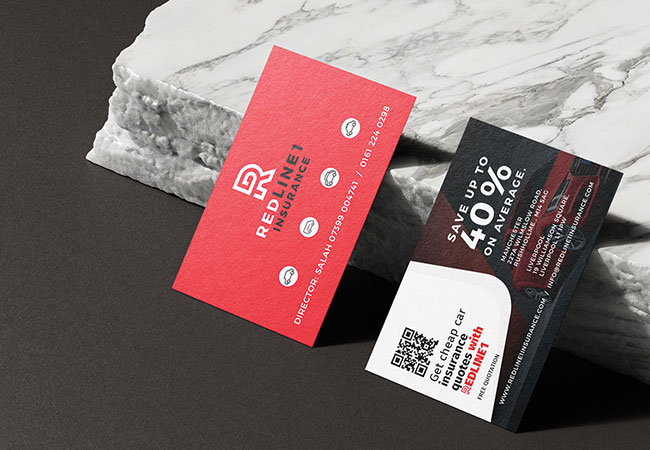
While most of your marketing materials may be digital, business cards still provide a strong presence in the physical world. You may have a local business or your job may often involve meeting new people. Business Cards provide a great way to introduce yourself to potential clients.
More often than not, the first impression people have of you is based on your business card. So your design has to set the tone. But with so many choices, it can be difficult to know where to begin! Read our 5 great tips to design the perfect business card.

The paper type you choose is just as important as the design elements. If the budget allows try and purchase business cards that are premium quality. Or at least look and feel interesting.
Uncoated stock has no sheen and is recommended for text-based designs. The silk and gloss stock is ideal for a more balanced consistency of rich colours and images. Choose our best-selling Gloss or Matt Laminated Business Cards for a combination of quality and affordability. For a creative punch or artisan businesses we recommend Spot UV or our Creative Kraft Brown range.
Fancy something completely different? Why not choose Magnetic Business Cards? Your clients can leave your card on their fridge and refer to it when they need your services!

Once you’ve gathered all your design information the next step can be tricky. Our recommendation would not be to use a DIY method or modify a template design that is available to everyone. Even with great looking templates your design will not be unique.
An experienced designer can help bring out all your ideas to life with unique concepts. Adding a touch of originality to your business card design and creating a unique brand can be priceless.
If you still prefer to design business cards yourself, we recommend using Canva which is a free online design tool.

We recommend taking full advantage of using both sides of business card. One side one can include the company logo, company name and contact information. The other side can include list of key services along with one or two images. Double sided business cards always offer the option to spread out the design without cramping everything in!

The colour scheme will often communicate your brands qualities and values from a single glance. The significance of this should not be overlooked. It can however, be tricky choosing the colours that best portray your business.
Which colours work best? Colourful or subdued? Colours can be neutral, modern, vibrant or specific orientated. Bright colours are perfect for standing out and making bold statements. However, a design dominated with a white background with a hint of colour can give a sophisticated look. For established businesses, it’s a good idea to keep the same branding theme across the rest of business stationery.

The choice of font needs to be consistent with the brand image. Choose a font that is easy to read and looks professional like Helvetica.
The font size is equally important. Don’t sacrifice readability just because you intend to fit a lot of information into a small space. Always consider removing irrelevant information. Business cards are used for exchanging contact information and should not be as densely populated as flyers.
If you do need to communicate more than you can reasonably cram onto your business card, an option is to include a QR code on the back. Use this to send people to a relevant page on your website. This will also add a sense of modernity to your business card.
We hope you found our top tips on our business card printing article useful. Our sales team are always on hand to provide further information. Feel free to contact us on 01922 666 288 or drop us an email on info@cheapasprints.com
Unlock 5%! Subscribe & Save
Copyright © Cheap as Prints 2025
We use cookies to enhance your experience. By continuing, you agree to our Privacy Policy.
Select which cookies you want to allow:
Save 5% on your order when you subsribe to our newsletter.